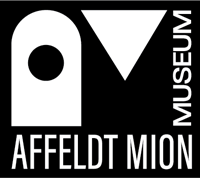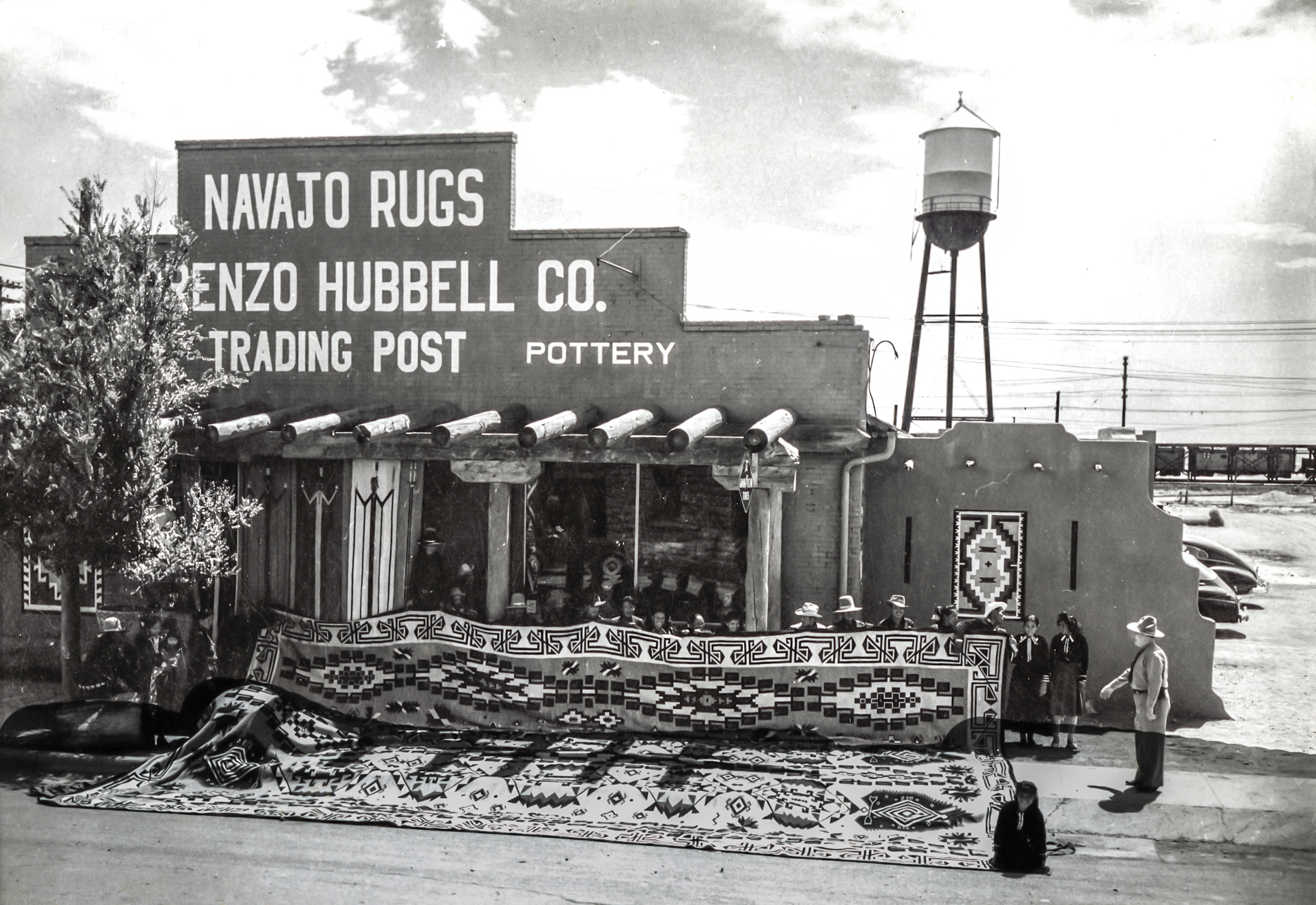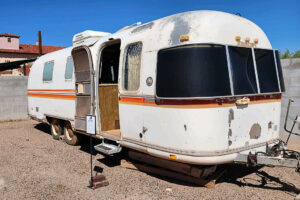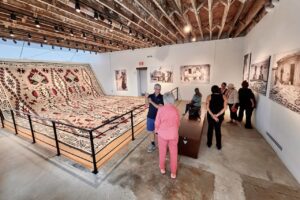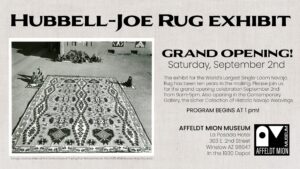The Hubbell-Joe Rug, the largest known hand-spun, and hand-carded Navajo (Diné) Rug is on exhibit at Affeldt Mion Museum, thanks to a long-term loan from the Winslow Arts Trust. The rug, originally commissioned by Lorenzo Hubbell Jr and shown in his Winslow Trading Post, returned to Winslow in 2012 thanks to Allan Affeldt and Tina Mion.

The Commission:
During the Great Depression, Lorenzo Hubbell Jr needed an attraction to draw tourists into his Winslow Arizona Trading Post. He came up with an innovative idea: to create the “World’s Largest Navajo Rug.” In 1932, he commissioned Julia Joe, a well-known weaver from Greasewood Arizona, to bring this vision to life. What resulted was a masterpiece, not just in size, but in technique, with an evenness of weave, uniformity of color, and complexity of design. Julia Joe considered this to be her finest work, and a showcase of her Kin ł ichii’nii (Red House) Clan.

Creating the “World’s Largest Navajo Rug”
To make a weaving this size, Julia Joe’s husband Sam built a custom metal pipe loom along with a 40’ x 30’ x 10’ building to house it. The community sheared a couple hundred of their sheep to provide the wool. Julia’s daughters, along with many other community members, spent nearly two years washing, carding, dying, and spinning the wool. Julia and daughter Lillie Joe Hill sat at the loom from “sunup to midnight” for “three years and three weeks” according to Hubbell documents, weaving the magnificent textile. In 1937, five years after Lorenzo Hubbell Jr. first commissioned the rug, Julia, Lille, and the Red House clan, who had put heart and soul into this rug, completed the 21’4’ x 32’7” masterpiece.
The weaving uses a natural palette of grays, blacks, whites, and the traditional J.L. Hubbell Ganado Red, and features the universe as the theme, including stars and the milky way. The design also includes horned toads, which Julia incorporated as protective talismans for family members. The border pattern is based on Ancestral Puebloan potshards found near the home. While viewing the rug, look for the spirit line, or ch’ihónít’I: a single contrasting color that extends through the border to the edge. Navajo weavers believe their spirits become entwined in the wool as they weave. The last stitch they make, the ch’ihónít’I, provides a path for the weaver’s spirit to safely leave. You’ll find Julia’s spirit line in the lower right corner.
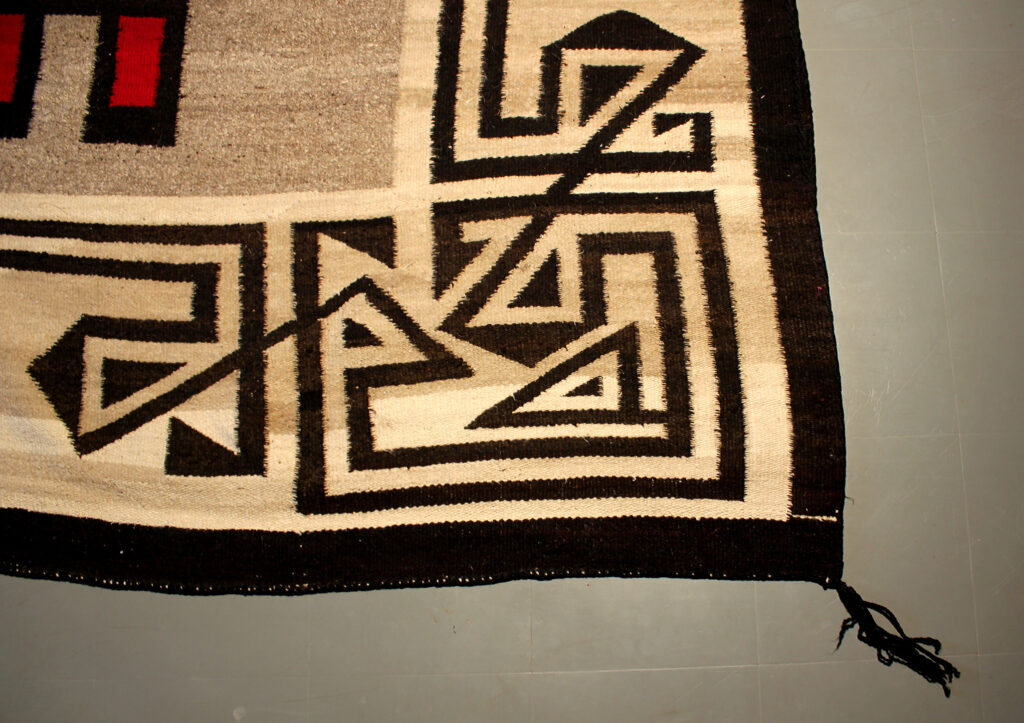
The Rug’s Journey
Hubbell used the extraordinary weaving as a marketing tool both in his Winslow Trading Post and beyond. The rug traveled from museums to the U.S. Senate Chambers in Washington D.C.; from the 1939 Gallup Inter-Tribal Indian Exhibition to Marshall Field & Company’s New York department store in 1943. The rug was shown at the 1948 International Travel Show in New York, and at Hubbell’s own Winslow Motor Company as a backdrop to the new 1946 DeSoto.
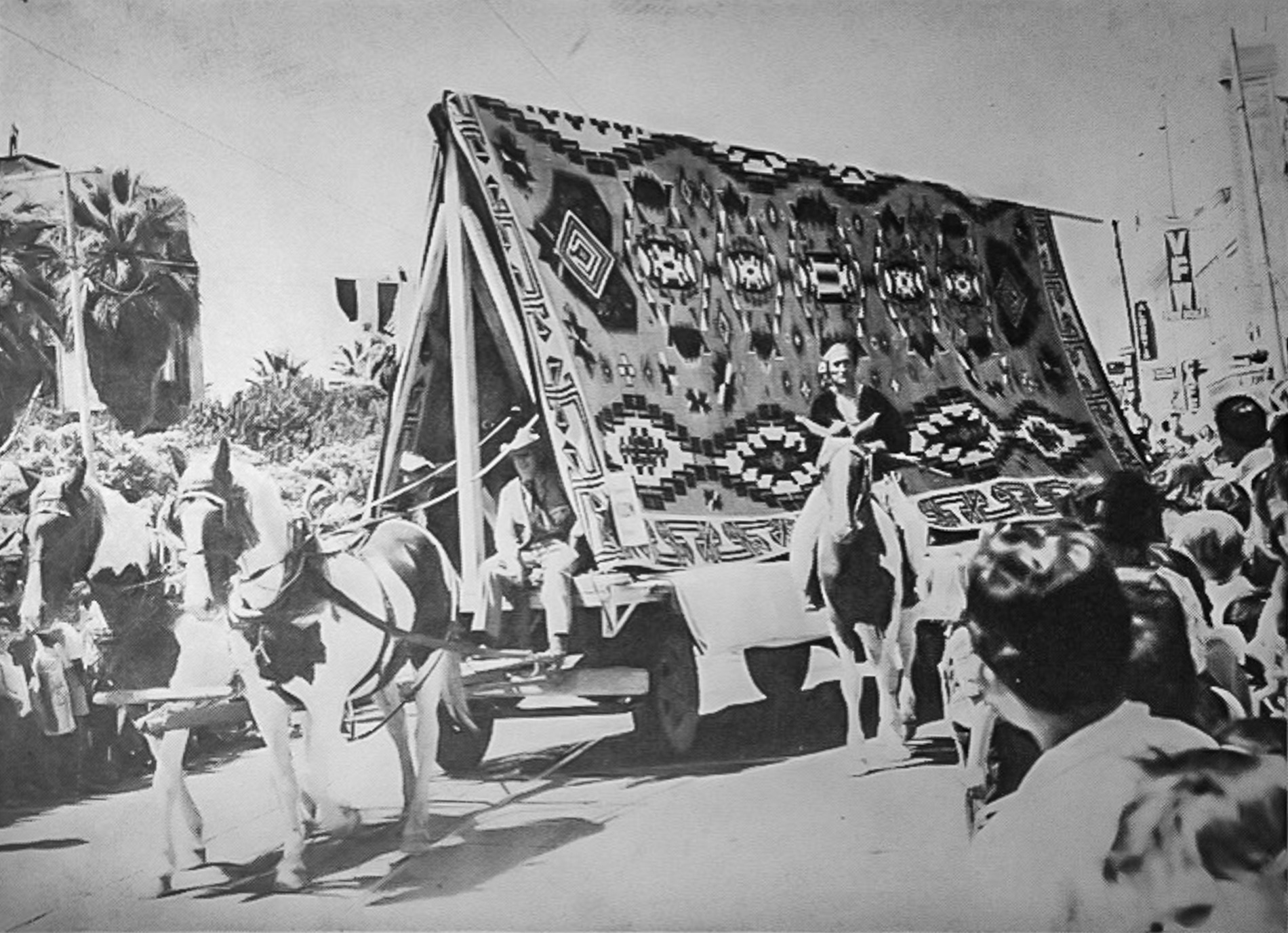
When Lorenzo Hubbell Jr went bankrupt in 1949, businessman Kyle Bales bought the Winslow Trading Post with all the inventory, including the famous rug. Between the 1950s-1970s, the massive weaving was occasionally shown in the still-operating trading post, plus continued to travel the country. In 1951, the rug was shown at the Los Angeles County Fair; in 1965, the World’s Fair in New York; in 1966, at the Heard Museum; and in 1969, the Arizona State Fair.
After Bales’s death, daughter Patricia donated the former Hubbell Trading Post in Winslow to the Arizona Historical Society in hopes of it becoming a museum. That did not happen, and Julia Joe’s masterpiece, the “World’s Largest Navajo Rug,” disappeared into storage where it remained for more than forty years.
Return to Winslow
By the time Allan Affledt and Tina Mion moved to Winslow in 1997, the rug had long been forgotten and Hubbell’s Trading Post had been unsympathetically ‘renovated.’ Allan understood the rug’s significance, so he tracked down Patricia Smith-–Kyle Bale’s daughter. Together, Allan and Patricia helped acquire the trading post, which became the Winslow Visitor’s Center. The once-famous rug remained in storage until 2012 when Allan purchased it from Patricia’s sons. Shortly after returning the weaving to Winslow, Allan hosted a blessing ceremony with Julia Joe’s family including Emma Joe, Julia’s daughter, who’d helped card the wool eighty years before. Emma’s family helped her walk the path one last time.
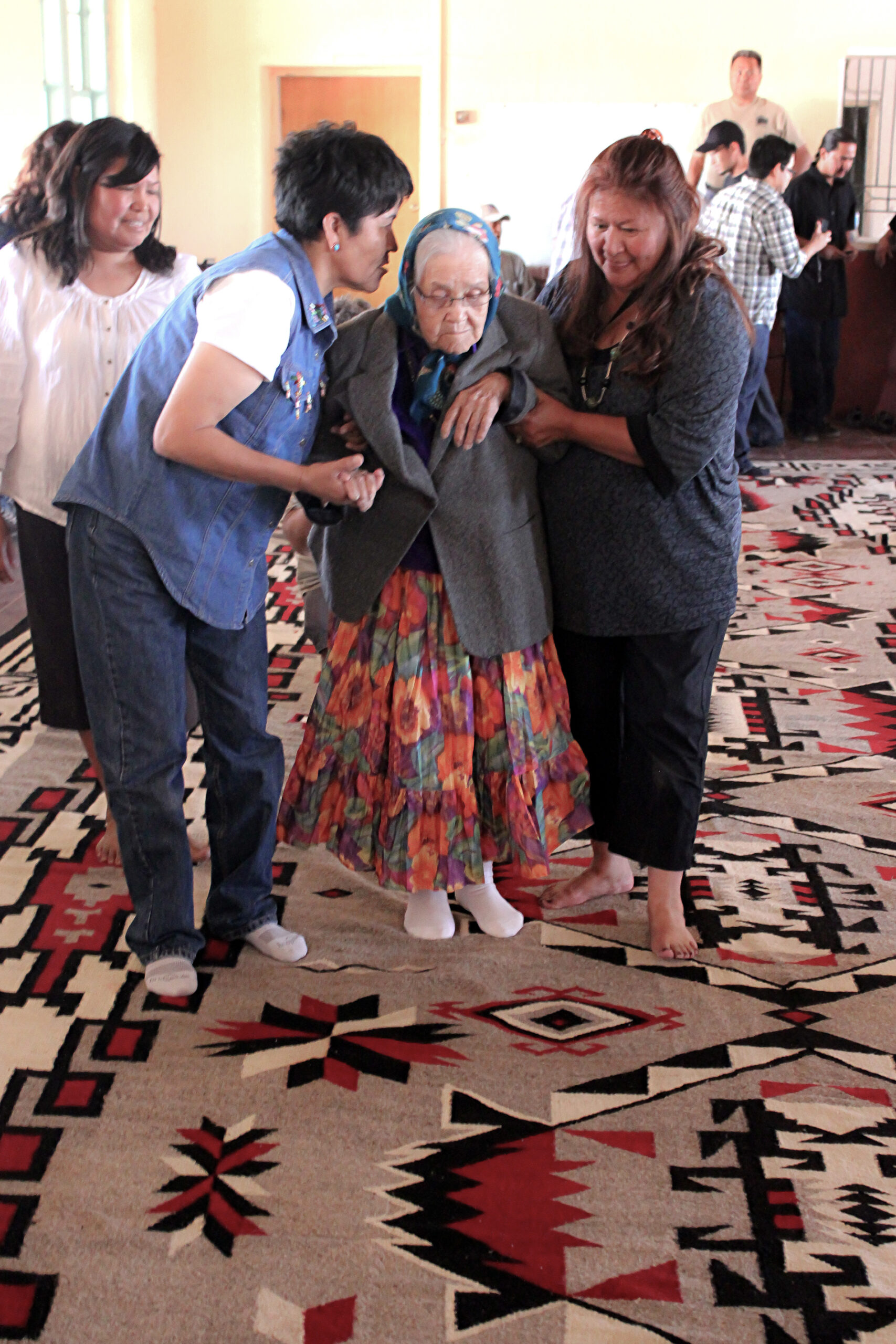
The Hubbell-Joe Rug Gallery
To reach a broader audience, Allan and Tina donated this important piece of history to the Winslow Arts Trust. They wanted the rug to be in the town where it was originally displayed, but the dream of an exhibit presented many challenges. A textile of this size and importance needed a large, important, and nuanced space. After years of planning, Allan Affeldt, with help from the City of Winslow, NACOG, and Allan’s crew of dedicated artists, engineers, and workers, completed the rehabilitation and expansion of Mary E.J. Colter’s 1930 depot at La Posada Hotel, including this redesigned baggage room, the new permanent home of the Hubbell-Joe Rug.
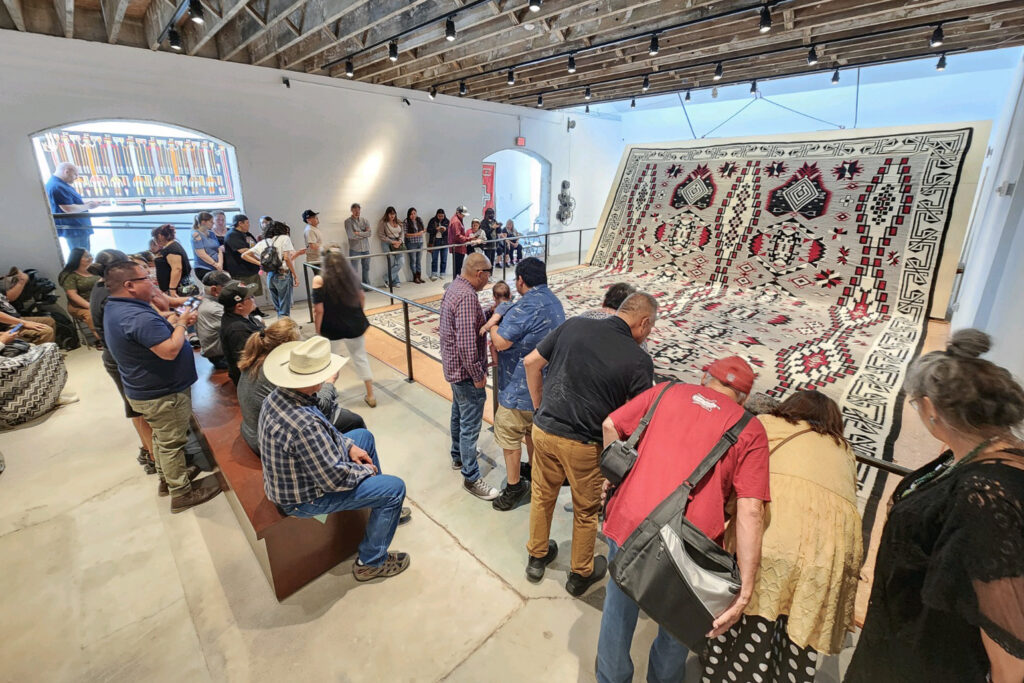
This extraordinary rug, brought to life in 1932 by an innovative marketer and a master weaver, can now be shared with the world, thanks to modern-day visionaries who value the preservation of our history and encouragement of the arts.
Hubbell-Joe Rug Naming
For years, the “world’s largest Navajo rug” was referred to as the Hubbell Rug, without credit to the weavers. But there are two essential players in this masterwork’s existence: Lorenzo Hubbell Jr, with the initial idea and funding, and Julia Joe, with the skill and creativity developed through generations of Navajo weavers. To reflect the dual origin, Affeldt Mion Museum refers to the weaving as the Hubbell-Joe Rug. The family refers to the weaving simply as “The Big Rug.”
To read more about the design and building of this exhibit, click the button below.
The Big Sister Rug of Chilchinbeto
While the Hubbell-Joe Rug was created to be the “World’s Largest Rug” in the 1930s, a weaving in 1977 surpassed it in size, created by the community of Chilchinbeto. The Big Sister Rug measures 24’5″ in height and 37’10” feet and consists of five sets of individual designs, so the effect is of twenty-five separate rugs side-by-side. Although it looks like the rugs are sewn together, it is, in fact, one woven piece, made by eleven weavers on a 38′ by 25′ loom using commercially produced yarn. The Big Sister is not currently on display but if you’d like to learn more, take a look at this terrific documentary.
The existence of the Big Sister does not diminish the accomplishments of Julia Joe, Lillie Joe, and the Kin ł ichii’nii clan, though, who not only wove this bordered, single-narrative rug, but also sheared, hand-carded, spun, and dyed the wool for this incredible masterwork. We applaud both the Chilchinbeto community and the community of Greasewood Arizona for what they’ve given the world in these two extraordinary weavings.
